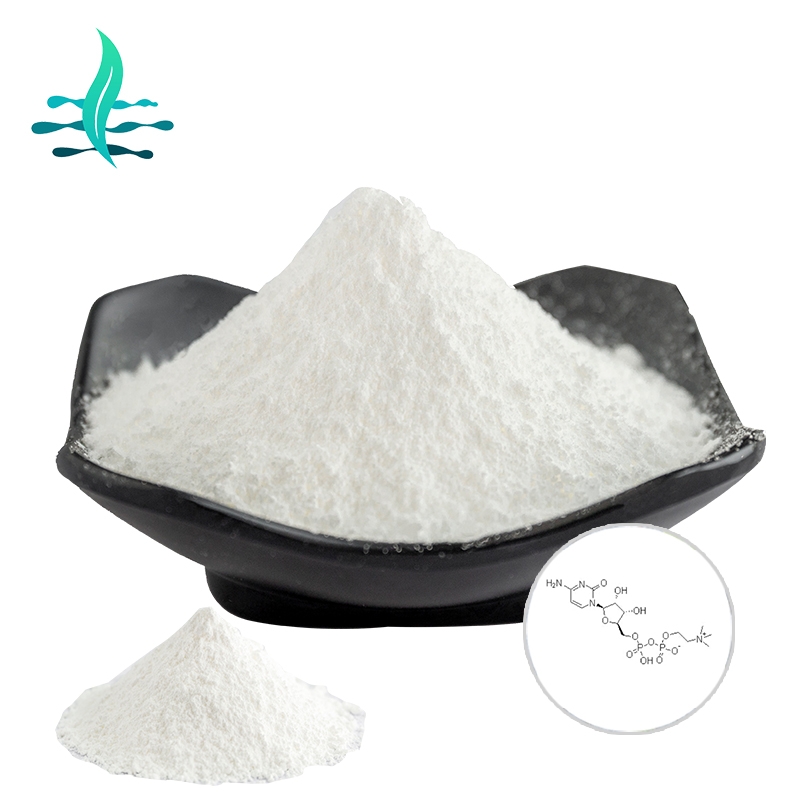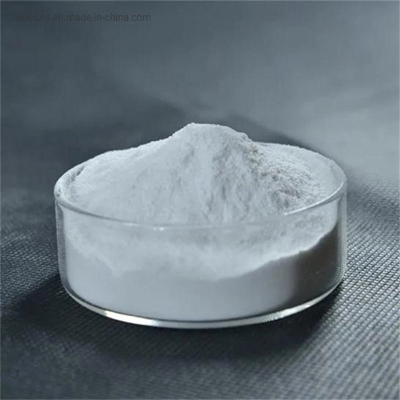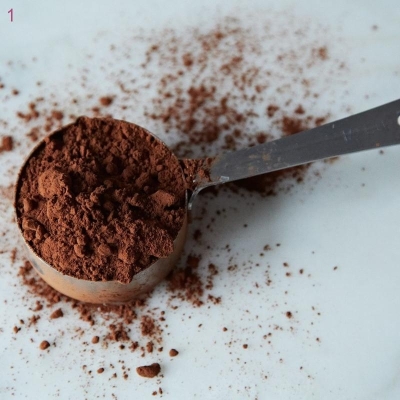China's plant extract export growth slowed down and the industry entered the adjustment stage
-
Last Update: 2017-05-19
-
Source: Internet
-
Author: User
Search more information of high quality chemicals, good prices and reliable suppliers, visit
www.echemi.com
In recent years, the plant extract industry has developed rapidly, which is widely used in food, medicine, chemical industry and so on However, compared with 2015, the export growth of plant extract industry slowed down in 2016, and the industry entered the adjustment stage The trade scale shrank in 2016, and the trade scale of plant extracts in China shrank: the trade volume was US $2.45 billion, down 4.77% year on year Among them, the export volume reached USD 1.93 billion, down 10.93% year on year; on the contrary, the import volume reached USD 520 million, up 27.84% year on year Considering that compared with 2015, the exchange rate in 2016 fluctuated greatly, which affected the judgment of import and export trade trend, the US dollar is converted into RMB according to the annual average exchange rate (the following statistical data are all in RMB) After conversion, the results show that: in 2016, China's withdrawal trade volume was 16.17 billion yuan, up 1.27% year-on-year, but the growth rate dropped 23.6 percentage points; among them, export The total value was 12.72 billion yuan, down 5.28%; the import value was 3.45 billion yuan, up 35.95% The decline of extract export is mainly caused by the precipice decline of essential oil products Due to the adjustment of market demand and the increasingly standardized customs supervision, the export value of essential oil products is 3.58 billion yuan, down 26.79% While the traditional extract, namely non essential oil products, is in a steady growth state, with the export volume of 9.13 billion yuan, up 7.03% year on year It can be seen that the foundation of extract export is relatively stable In 2016, China exported extract products to 150 countries and regions Asia, Europe and America are the most important export markets, accounting for nearly 90% Asia is the largest market for extract exports In 2016, China's exports to Asia amounted to 5.81 billion yuan, accounting for 45.7% of the total exports China's exports to Asia decreased by 13.63% year-on-year due to the sharp decline of essential oil products in the ASEAN market However, exports to Europe and North America are mainly non essential oil products, which are relatively stable and less volatile, with exports of 2.72 billion yuan and 2.88 billion yuan respectively From the perspective of a single country, since 2011, the United States has replaced Japan as China's largest exporter of extracts In the United States extract is mainly used in the production of dietary supplements and food additives Since the DSHEA (dietary supplement health and Education Act) was issued in 1994 in the United States, the dietary supplement industry has developed rapidly, the demand for raw materials has increased sharply, and the export of extracts has shown a rigid feature In 2016, China exported 2.77 billion yuan of extract to the United States, accounting for 21.76% of the total export amount, up 5.88% year on year Japan and South Korea followed China's export volume to Japan is 1.44 billion yuan, up 1.16% year on year In addition to the export of common extracts, the export of raw materials of Chinese medicine is a major feature of the export to Japan Japan's Chinese medicine industry has a great demand for raw materials Chinese medicine extracts, such as Paeonia and liquorice soup, Maimendong soup, Wuling powder, Jiawei Xiaoyao Powder, etc., have an export volume of 540 million yuan Although China's export scale to South Korea is not as large as that of the United States and Japan, it is outstanding due to the prosperity of South Korea's health care products and cosmetics industry, with an export volume of 640 million yuan, an increase of 33.24% year on year Among the other top 10 countries and regions, the export of extracts to Spain, Germany, France and other Western European countries was relatively stable, with year-on-year growth of 20.95%, 13.77% and 9.15% respectively Hong Kong's exports to Hong Kong fell 2.04% year on year due to its declining status as a transit trade port The rest of Southeast Asia and other countries, due to the decline of essential oil products, the decline in exports is obvious In 2016, the concentration of export industries was low, and the top ten varieties of extract export in China included Stevia extract, eucalyptus oil, menthol, liquorice extract, marigold extract, capsanthin, bilberry extract, rutin and its derivatives, hesperidin, cinnamon oil, etc Stevia extract In 2016, stevia extract continued to rank first in the export of extract, with an annual export volume of 1.45 billion yuan The main export markets of Stevia are the United States and Malaysia The United States is the largest Stevia export market in China, with an export amount of 530 million yuan, accounting for 36.76% of the total Stevia export Malaysia followed closely with an export volume of 390 million yuan, accounting for 26.74% of the total export of Stevia Stevia market is very concentrated South Korea, Japan, Mexico and other countries, which are located behind the United States and Malaysia, export volume is only 120 million yuan, 70 million yuan and 60 million yuan respectively, while the export volume of the United States and Malaysia accounts for more than 60% Licorice extract Due to the unfavorable foreign trade environment, and the rapid growth of export volume in the international market in the past years, the market is saturated In the past three years, the growth of licorice market is weak In 2016, the export volume was 529 million yuan, up 0.06% year on year Japan and the United States are the main export markets of Glycyrrhiza extract, and the export amount to them accounts for 62.07% of the total export amount In 2016, China's export to Japan was 170 million yuan, down 16.53% year-on-year, and to the United States was 160 million yuan, up 37.08% year-on-year The export of Glycyrrhiza is mainly in the form of feed processing In 2016, the import value of Glycyrrhiza was 310 million yuan Due to the weakness of the export market, the import trade of Glycyrrhiza decreased, down 1.55% year on year Ginkgo biloba extract After the explosive growth of Ginkgo biloba extract in 2013, the export has maintained a small growth trend Although the domestic Ginkgo biloba extract industry experienced significant adjustment in 2015, the overall impact on foreign trade was relatively small In 2016, the export volume of Ginkgo biloba increased by an increase of 22 million yuan, an increase of 26.67% year-on-year The standardization of Ginkgo biloba extract industry had a certain impact on its middle production China's Ginkgo biloba extract is mainly exported to North America, Europe, Japan and South Korea in Asia, and the United States is the largest export market In 2016, the amount of exports to the United States accounted for 37.51% of the global exports The Ginkgo biloba market in the United States is relatively stable China's exports to the United States amounted to 83.928 million yuan, up 7.46% year on year Since 2015, the Korean market has surpassed Germany and become the second largest market of Ginkgo biloba extract The export volume to Korea reached 25.514 million yuan, an increase of 41.64% year on year The market is full of vitality Germany is also a traditional market for the export of extracts In 2016, the export volume to Germany was 1988.05 million yuan, an increase of 22.27% year on year Due to the tightening of domestic policies, the downturn of the overall foreign trade environment in the international market and the increase of competitive pressure, the number of extractive export enterprises decreased in 2016 There are 2120 extractive export enterprises in China, a decrease of 129 compared with 2015, of which 124 are private enterprises In China, the concentration of extractive export industry is low, the main body of export is private enterprises, and the proportion of state-owned enterprises and foreign-funded enterprises is small However, due to the strong strength and scale advantage of state-owned enterprises and foreign-funded enterprises, the export amount increased by 12.23% and 7.75% respectively year on year, while the private enterprises were slightly weak, and the export amount decreased by 11.79% year on year The export volume of the top ten enterprises accounted for 23.77% of the total export volume of extracts Many efforts have been made by the government and the industry to deal with the changes of the international situation The government actively plays its role in building platform and policy guidance In December 2015, the national standardization system construction and development plan (2016-2020) issued by the State Council proposed to develop a modern standardization system with Chinese characteristics, guide the industry to "cultivate the standards of development and transformation groups" and "stimulate the vitality of market entities" One belt, one road one belt, one road development plan (2016-2020 years), was released in January 2017 to create a new pattern of opening up to all directions of Chinese medicine The strengthening of exchanges and cooperation with other countries along the "one belt" road in the field of Chinese medicine is bound to lead the development of the market of extracts along the line Extract standards and certification in the industry help the development of the industry Under the leadership of China Chamber of Commerce for medical insurance, domestic extract enterprises actively participated in the formulation of international business standards for plant extracts So far, two batches of standards have been formulated, and the third batch of standards is about to be issued, which has aroused great repercussions at home and abroad At the same time, the chamber also actively docked the industry standards with the national standards In 2016, it and CFDA jointly screened the international business standards for extracts of ginseng, Polygonum cuspidatum, Ginkgo biloba, etc., and applied to become the national food standards In addition, the chamber of Commerce, together with the National Health Foundation of the United States (NSF), has established the "quality supplier of plant extracts" certification (GEP certification) for enterprises This certification meets the requirements of the FSMA act of the United States, adds the integrity evaluation certification on the factory audit certification, fills the gap of domestic GMP certification, lays a good foundation for entering the third-party certification recognized by the FDA, and creates a "new business card" for Chinese extract enterprises in the international market National policies and regulations bring good development opportunities for the extractive industry, while industry standards and certification provide a good way for enterprises to seize the opportunities Although the extractive industry is in the adjustment stage now, with the standardization of the industry on the right track, the international reputation is gradually formed, and the recovery and further development of the extractive industry is worth looking forward to.
This article is an English version of an article which is originally in the Chinese language on echemi.com and is provided for information purposes only.
This website makes no representation or warranty of any kind, either expressed or implied, as to the accuracy, completeness ownership or reliability of
the article or any translations thereof. If you have any concerns or complaints relating to the article, please send an email, providing a detailed
description of the concern or complaint, to
service@echemi.com. A staff member will contact you within 5 working days. Once verified, infringing content
will be removed immediately.







